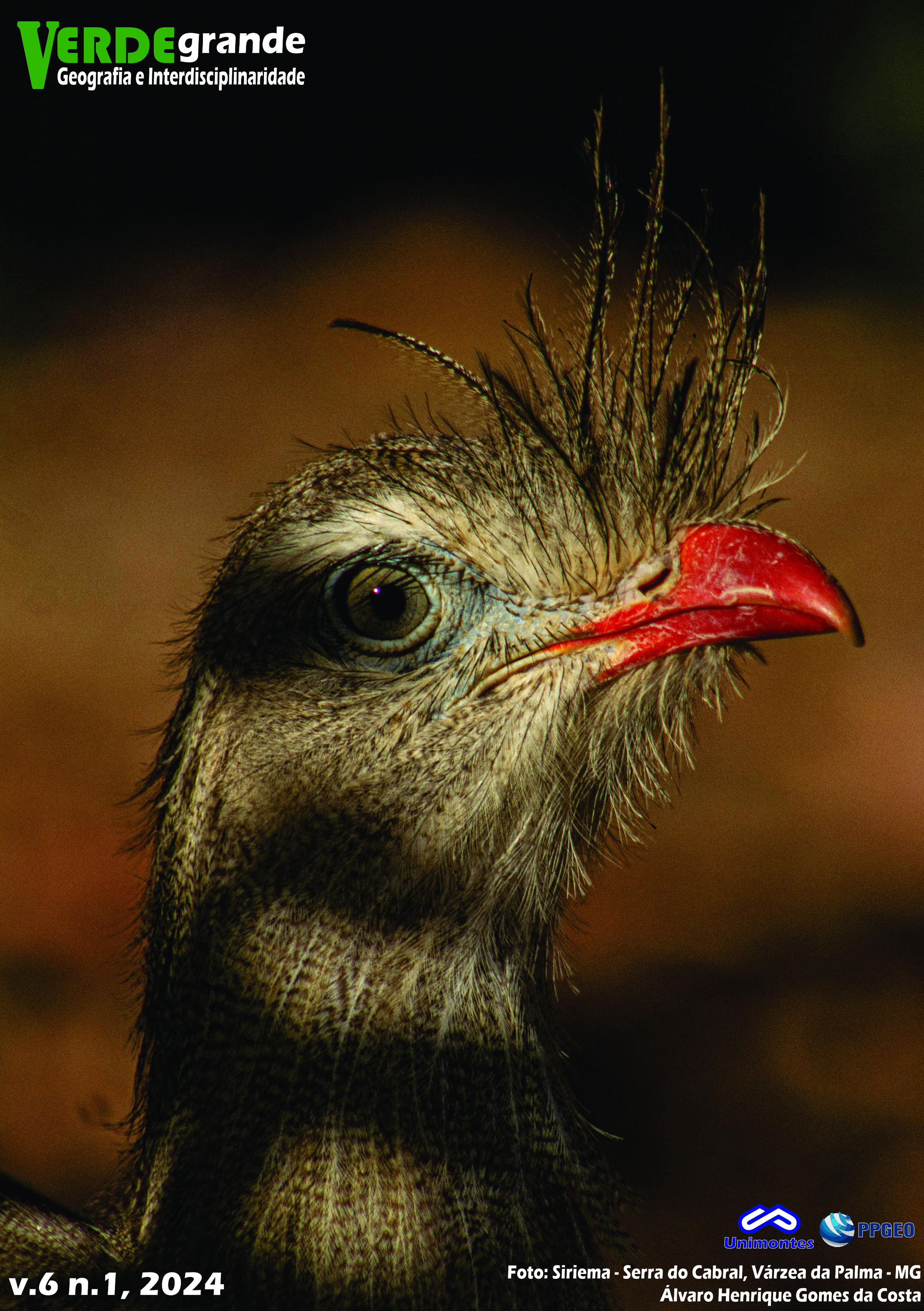STUDY OF SOCIO-ENVIRONMENTAL IMPACTS IN THE QUARENTA WATERSHED, MANAUS/AM
DOI:
10.46551/rvg267523952024199124Keywords:
Palavras-chave: Quarenta, Impactos socioambientais, descarte do lixo.Abstract
The hydrographic basins are environmental units that allow the realization of studies of integrated analysis of the landscape, inserting the physical and social aspects. The results of a qualitative research on the socio-environmental impacts in the Quarenta watershed are presented in this article. To obtain data and information, geotechnology and cartographic interpretation tools were applied. Direct observation, field supervision, records and interviews helped the investigation and understanding of the forms and modalities of impact throughout the entire basin. The results indicated that the territorial occupation between the lower and middle courses did not present any type of urban planning, showing the complete absence of infrastructure, mainly in sanitation and garbage disposal. Deforestation affects around 70% of the basin area, with vegetation remaining only in the SW-NW sector, which corresponds to the limits of the Manáos Environmental Protection Area. The impacts on the main tributary of the basin have occurred for more than 3 decades, only in the middle of the third decade did the Environmental Sanitation Program implement a sanitation and spatial requalification system in the Quarenta area.
Downloads
References
ALBUQUERQUE, A. R. C. Bacia hidrográfica: unidade de planejamento ambiental. Revista Geonorte, ed. especial, v.4, n.4, p.201 – 209, 2012.
BATISTA, Selma. P. M., Injustiça socioambiental: o caso PROSAMIM, Geografia HumanaTese de DoutoradoFaculdade de Filosofia, Letras e Ciências Humanas2013.
ARCOVA, F.C.S.; CICCO, V. Qualidade da água de microbacias com diferentes usos do solo na região de Cunha, Estado de São Paulo. ScientiaForestalis, Piracicaba, v.5, n.6, p.125-34, 1999.
DONADIO N. M. M.; GALBIATTPAULA, PR. C. Qualidade da água de nascentes com diferentes usos do solo na bacia hidrográfica do córrego Rico, São Paulo, Brasil. Engenharia Agrícola 2005; 25(1): 115-125. http://dx.doi. org/10.1590/S0100-69162005000100013.
CALHEIROS, V. Maioria das residências em Manaus é em favelas, mostra estudo do IBGE. 2019.
MENDONÇA, F. S.A.U – Sistema ambiental urbano: uma abordagem dos problemas socioambientais da cidade. In: MENDONÇA, Francisco. (org.). Impactos socioambientais urbanos. Curitiba: Editora UFPR, 2004. p. 185-207.
MARTINS JUNIOR, D. F. Rios urbanos de Manaus: Proposta teórico-metodológica para gestão e regulação de recursos hídricos com base no Igarapé do Quarenta. Dissertação - Programa de Pós-graduação emGestão e Regulação de Recursos Hídricos da Universidade do Estado do Amazonas. Manaus: 2018, 179f.
MELLO, M.de; LMOURA, H. A. de. Migrações para Manaus. Recife: Massangana, 1990.
OLIVEIRA, Ercivan, Gomes de, REBELLO, Adoréa. Planejamento ambiental em bacias hidrográficas: um estudo preliminar de indicadores socioambientais na Microbacia do Quarenta (Manaus-Am). In: XIII Simpósio Brasileiro de Geografia Física, 2009.
PINTO, J.G. Análise introdutória do processo de ocupação urbana em Manaus e suas consequências socioambientais. Dissertação de Mestrado, Universidade Federal do Amazonas, Manaus, Amazonas.91p, 2008.
OLIVEIRA, José Aldemir et al. Cidade de Manaus: visões interdisciplinares. Manaus:
Editora da Universidade do Amazonas – EDUA, 2003.
OLIVEIRA, J. A.de. Crônicas da minha cidade. 1 ed. Rio de Janeiro: Letra Capital, 2017. p.13
RIMA PROSAMIM – Relatório de Impacto Ambiental do Programa Social e Ambiental dos Igarapés de Manaus. Julho de 2004. Manaus, 140 p.
SANTOS, M.C.; CAMPOS, A. Estratégia para o desenvolvimento sustentável do turismo, In__. Turismo comunitário e responsabilidade socioambiental. Fortaleza, EDUECE, 2003, p. 161-172.
VIEIRA, V. A., TIBOLAF.Pesquisa QualitativaemMarketingesuasVariações: Trilhaspara Pesquisas Futuras, RAC, v. 9, n. 2, abr./jun. 2005.
VILAÇA A. A. N. B. Habitação e ação pública na contemporaneidade: um estudo de caso na área central de Manaus. Dissertação (mestrado em Geografia). Universidade de São Paulo, USP. São Paulo, 2012. 124p.
Downloads
Published
How to Cite
Issue
Section
License
Copyright (c) 2024 Andreia Oliveira de Andrade

This work is licensed under a Creative Commons Attribution-NonCommercial-NoDerivatives 4.0 International License.
You are free to:
Share — copy and redistribute the material in any medium or format
The licensor cannot revoke these freedoms as long as you follow the license terms.
Under the following terms:
Attribution — You must give appropriate credit, provide a link to the license, and indicate if changes were made. You may do so in any reasonable manner, but not in any way that suggests the licensor endorses you or your use.
NonCommercial — You may not use the material for commercial purposes.
NoDerivatives — If you remix, transform, or build upon the material, you may not distribute the modified material.
No additional restrictions — You may not apply legal terms or technological measures that legally restrict others from doing anything the license permits.


















 Esta obra está licenciada com
Esta obra está licenciada com 